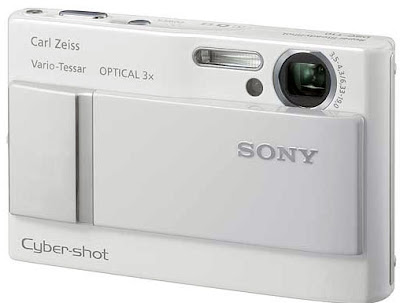It's easy to become bewildered by the sheer variety of digital cameras on the market, as every manufacturer offers many variations of megapixel rating, zoom lens, and form-factor. If you intend to produce images for print, you need a camera with a high resolution, but megapixels don't tell the whole'story. To produce high-quality images that can be later manipulated in an image-editing program, you need a flexible lens system and plenty of control, which often means a professional or a prosumer model.
At the low end of the digital camera spectrum are compact digital cameras. These are affordable, easy to use, and ideal for beginners or as a second camera for the serious photographer. If you wish to create images that will look professional when printed out, however, you will need to look farther up the price chain.
Prosumer Cameras
At first glance it's very difficult to spot any difference between prosumer digital cameras and professional models. Both types of camera usually have the lens mounted at the center of the camera, giving the impression that they are Single Lens Reflex (SLR) cameras, but this isn't the case. Many prosumer cameras take their pictures in a similar way to smaller compact models.
The viewfinder is a separate optical system, usually situated above the lens, and what it shows doesn't always reflect what the camera will actually capture. Other cameras use an electronic viewfinder, but this may lack detail or color depth, or blur with any movement Using the LCD screen will give you a more accurate picture, but will also drain the battery faster, and the screen might not be visible in all light conditions.
Apart from this minor issue, prosumer cameras offer a range of features that rival more expensive professional models. Most prosumer digital cameras, for example, come equipped with a respectable optical zoom, enabling you to pick out detail from a distance or include depth-of-field effects in your photographs.
Prosumer cameras also come equipped with a choice of automatic exposure controls to assist you when shooting in specific situations such as night-time, studio, or action shots. And most prosumer cameras also include a good built-in flash, a hot-shoe for an external flash, and a range of standard controls including automatic timer, macro function, and LCD view screen with image-editing functions.
If you decide to invest in a prosumer camera, one feature is a must-have: a full manual mode that allows you to adjust exposure settings and aperture. Without this, your prosumer camera will be no more useful than a cheaper compact camera.
All of this control means that you can shoot images that are often indistinguishable from images taken with a professional camera, and recent models from Canon, Sony, Fuji, Konica-Minolta, and Nikon offer resolutions beyond 6 megapixels, meaning they are capable of producing images that will print out at sizes larger than US Letter or A4.
Professional Digital Cameras
Professional digital cameras offer all of the functions of prosumer cameras and more. The extensive range of features and build quality are reflected in the expensive price tag. As well as providing the user with full manual control over almost every aspect of the camera, professional digital cameras also o.ffertrue SLR functionality.
For the photographer this has two advantages: firstly, because you are looking through the actual lens when you shoot, you can be sure that every image you take will be exactly what you saw. Secondly, SLR cameras allow you to attach other types of lens; this means that you can purchase extra lenses, such as fish-eye or wide-angle, and fit them to t e camera. This is ideal for traditional film photographers moving over to digital because it gives them the option of using their old lenses
 A good compact digital camera, such as Sony's DSO-T10, can produce fantastic results, thanks to high resolutions and cutting-edge lens technology, but can't match the flexibility and fine control of prosumer and digital SLR models
A good compact digital camera, such as Sony's DSO-T10, can produce fantastic results, thanks to high resolutions and cutting-edge lens technology, but can't match the flexibility and fine control of prosumer and digital SLR models

